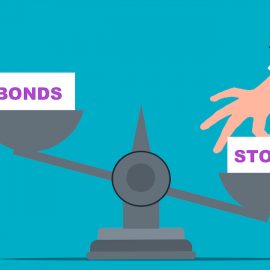
What’s The Book on Rental Property Investing by Brandon Turner about? Do you want to get rich off managing real estate properties?
In The Book on Rental Property Investing, Brandon Turner covers each stage of the rental property investment process. Additionally, he explores overarching strategies that’ll help new investors think professionally about their portfolios.
Read below for a brief overview of The Book on Rental Property Investing.
The Book on Rental Property Investing by Brandon Turner
In The Book on Rental Property Investment, Brandon Turner offers an educational guide to effectively locate, buy, and manage real estate properties. Turner identifies the major pitfalls new investors encounter, and he suggests how to profitably overcome these challenges by working smarter, not harder.
Turner is a real estate investor with hundreds of income-earning properties. He’s also a bestselling author and a former host of Bigger Pockets, a real estate investment podcast.
Introduction to Real Estate Investment (REI)
Before examining specific approaches to rental property investing, Turner addresses the basic principles you’ll need to know before entering the field—particularly the financial approaches, benefits, and risks involved.
In this section, we’ll first introduce the ways properties generate income. We’ll then explore several strategies for getting started in the industry. Finally, we’ll examine some pitfalls to avoid.
How Rental Properties Make Money
Turner recognizes that most people buy rental properties to make money, and he specifies four ways they generate income:
1) Cash flow: This is the money coming in after you pay expenses. It’s usually regular rent from tenants. Turner argues that cash flow is the most vital income source—it creates an immediate return on your investment and funds future growth. Therefore, he advises selecting properties that produce cash flow immediately.
2) Tax benefits: Turner notes that governments see rental property owners as economically beneficial because they provide housing for people who can’t afford to own property. Therefore, they often give owners tax benefits.
3) Appreciation: A property’s worth increases over time. Turner explains that real estate has two main forms of appreciation:
- Natural appreciation: caused by economic factors like inflation, supply, demand, and scarcity
- Forced appreciation: usually caused by property improvement work, such as providing new hardware, a garage door, or even attractive landscape features like ivy or hedges)
4) “Loan paydown”: Turner explains that receiving regular rent from tenants pays down your mortgage, expediting full ownership of the property. Usually, lenders apply a device called amortization to your loan payment: Initially, more of the payment is applied to the interest on the loan. However, over time, the weight of each payment shifts to paying off the principal (the initial quantity of the loan).
Strategies for Getting Started in the Rental Property Industry
With your first property, you may wonder how much money you need to start investing. Turner notes that many investors opt to use leverage at this initial stage: the ability to borrow money—often through a mortgage—to purchase the property. This allows you to put down a much smaller quantity of your own resources into your first property. For example, with leverage, a $200,000 home may only require an upfront investment of $40,000.
Taking on debt entails risk, Turner warns. The greater the loan, the greater the risk. The amount you owe is larger due to both a higher principal and more interest accrued over time. The property has to make enough money for you to pay the loan down without using your own resources: Therefore, be sure that a property’s cash flow exceeds both loan payments and expenses.
Some Potential Pitfalls of Investing in Rental Properties
Turner warns of several friction points when starting in rental property investment. Becoming successful takes systematic, long-term effort; you won’t get rich overnight. Moreover, it’s easy to get caught up in time-consuming day-to-day maintenance of properties. So, decide on your level of commitment, and consider using property management instead. (We’ll discuss property management in more detail later.)
Also, Turner continues, prepare for paperwork—lots of it. You’ll be in charge of tax and insurance forms, processing tenant applications and background checks, tracking rent payments and contractor expenses, and paying fees for municipal services like trash collection, water, and sewage.
Members of Your Real Estate Team
Now that we’ve covered some basic background knowledge behind REI, let’s discuss some of the specific steps of purchasing your first rental property. One of the first things to do is to surround yourself with the right people: Turner argues that the real estate team you choose lends consistency, integrity, and professionalism to your enterprise. In the following sections, we’ll cover each type of team member and their contribution(s) to your team.
Your Spouse and Mentors
Beyond including the real estate experts and other professionals we’ll mention below, your real estate team will likely benefit from including people much closer to home. Your spouse in particular can offer indispensable morale and emotional support. In some cases—as in Turner’s—they can become a vital business partner.
Turner also stresses finding a person to act as an industry mentor, perhaps a successful property investor who can offer guidance and advice.
Management and Upkeep Members
Next, let’s explore the team members who’ll help you manage and upkeep your property. Many rental property investors opt to use property managers or management companies: individuals or businesses that handle many on- and off-site property tasks for you (for example, rent collection and handling contractors). They do so in exchange for a percentage of your profit. Turner cautions that property managers generally have less personally at stake in a property than you do and less concern over spending your money on expenses and repairs. So, gauge whether they’re truly necessary and, if they are, how much oversight you’ll have over their work.
Unless you can fix every possible structural issue with a house, you’ll also likely need a contractor at some point during your rental property journey (for instance, an electrician or carpenter). Turner recommends being proactive in finding reliable contractors; don’t assume you’ll chance upon them. Be sure to research both contractors’ prices and their reputations, as their work seriously affects your bottom line and reputation with tenants.
Real estate agents are also necessary management team members. They’ll guide you toward the best deals on property sales and serve as your representative in negotiating with the seller. Turner advises using individuals who show exemplary professionalism, understand your particular market, and are tech-literate (since many property listings and real estate tools are now online). He advises interviewing prospective agents to make sure they’re a great fit.
Financial Members
The first financial teammate Turner suggests including in your team is a certified public accountant (CPA) to help navigate the complexities of real estate tax filing.
Turner adds that a bookkeeper is useful for calculating your diverse expenses and income streams. Consider hiring an insurance expert, too. They can hunt down the best insurance deals so you can minimize costs. Common types of insurance you’ll need include landlord, flood, fire, liability, and loss of rent.
Legal Members
Finally, don’t forget to hire a lawyer. Turner says every landlord needs one at some point, whether it’s to ensure the legitimacy of your legal documents or oversee eviction processes. Though lawyers are expensive, Turner asserts that you likely won’t need one that often. Find one who specializes in real estate to expedite legal processes and ultimately save money.
Selecting Properties
Now that you’ve assembled your rental property investment team, it’s time to find properties to invest in. In this section, we’ll first cover different property types. Finally, we’ll explore how to find suitable properties.
Choosing a Property Type
Consider what type of property you’re interested in renting. Each has advantages and disadvantages: Turner suggests considering things like maintenance needs, financing options, and competition when choosing what’s right for you.
Single-family homes draw long-term tenants and are often more affordable than other property types (for instance, apartment buildings). Also, you’ll control the whole property, meaning it’s easier to manage the grounds and run appreciation projects. However, you may face more competition when buying these properties, primarily from homeowners. It can also be hard to build wealth investing in these properties, as conventional lenders usually only allow you to finance limited properties at a time.
Turner explains that multi-family homes have multiple units, potentially offering more rent. You’ll also face less homeowner competition when buying one. However, the more units involved, the more maintenance is typically required, and the higher the purchase price. Additionally, you’ll face competition from other professional investors.
Condos and townhouses are both complex-based properties containing multiple units, often with different individuals owning different units. Turner notes that they both require low levels of maintenance and have low upkeep expenses. However, they’re typically overseen by homeowner associations (HOAs) that significantly limit your control over the property and charge substantial fees.
Some investors opt for commercial rather than residential properties. Turner argues that commercial tenants tend to require less fuss than residential ones, with fewer late-night maintenance requests and more reliably punctual rent payments. That said, commercial properties tend to offer lower rates of return. Furthermore, initial costs are frequently higher. Finally, vacant yet specialized professional spaces can be hard to find the right tenant for, meaning longer periods without rent.
Locating Possible Properties
Turner notes that once you’ve decided on a property type, you can use several methods to track down possible properties to invest in:
The Multiple Listing Service (MLS): a database with the most accurate survey of listings. In the MLS, smaller catalogs of regional listings combine to form a single national database. You likely need a real estate agent to access it—another reason to cultivate this relationship early.
Direct Mail Marketing: frequently sending out postcards or letters to property owners you think might sell. Some owner lists are accessible for a fee, or you can make your own. This cold-calling approach appeals mostly to struggling owners who want to sell quickly and hassle-free.
Driving around, hunting properties: a low-cost option that’s especially useful for finding options. Look out for signs of distress or neglect that often indicate no one resides in a property—the owner might be poised to sell.
Evictions: Turner points out that landlords amid evicting tenants are often going through stressful and legally complicated experiences. They may be more apt to sell quickly—and at a lower price—if you present them with a timely exit opportunity. Eviction records are generally available to the public.
Craigslist: a common online hub for locating sellers or advertising yourself. Turner emphasizes that the site is free and easy to navigate.
Lending Options
Now that you’ve found an attractive property, you’ll need to finance its purchase. Since many early-stage investors don’t have the cash on hand to buy properties outright, Turner states it’s essential to understand the leverage options available to you. In this section, we’ll examine three specific lender types: conventional, portfolio, and private. Then, we’ll discuss tips for obtaining a loan.
Conventional Lending
Turner explains that you can acquire a conventional loan by going to a lender, such as a bank or credit union. These loans tend to be stable and trustworthy. They also provide longer terms and lower interest rates than most other options, giving you longer to pay the loan back.
However, conventional loans have strict application criteria, including minimum buyer credit scores and conditions around how much you can borrow. These criteria exist because many lenders bundle together mortgages they’ve approved and sell them on to governmentally-backed organizations. These organizations want to reduce their risk and ensure the loans they buy are paid back—therefore, they require the lenders to set strict lending criteria.
Portfolio Lenders
According to Turner, portfolio lenders can be the same institutions as conventional lenders, such as banks or credit unions—but not always. They curate their own loans rather than selling them to government organizations. This means less stringent oversight of the loans, making it easier to qualify for one (as long as you have good credit). Also, you’re more likely to secure more simultaneous mortgages with a portfolio lender and their eased restrictions, allowing you to build your rental property empire.
However, loans from portfolio lenders can have shorter terms, giving you less time to pay off both the principal and interest. Further, the lenders may be harder to find—some don’t even use the term “portfolio,” so you may have to hunt them down.
Private Lenders
Turner points out that private lenders can offer terms freer of the restrictions conventional lenders demand. These loans are especially useful if you’re interested in purchasing a property that needs a lot of work, something that usually dissuades conventional lenders from getting on board. Armed with the private lender’s investment, you can fix up the property, refinance the mortgage with a bank later on, and pay back the initial private lender in full. The short-term quality of these loans often allows the lender to ask for a higher interest rate to make their investment worthwhile.
Purchasing Properties
Once you’ve found the property you want to buy and have a plan for financing it, you have to buy it. In this section, we’ll explore the process of making an initial offer and the negotiating skills required during the purchasing process.
The Introductory Offer
According to Turner, there’s no set rule for an opening offer, but you should ask two questions: First, how much competition is there for the property? When competition is strong, higher offers can put you ahead of the pack. Conversely, a buyer who’s had a property on the market for a while without an offer might abandon her original asking price, making bidding low a sounder strategy. Second, ask why the owner is selling—is it for money or expedience? This helps you better gauge a number they’ll accept.
The Art of Negotiating
Turner highlights three post-offer scenarios: acceptance, counter-offer, or rejection. Counter-offers are extremely common, especially if you don’t immediately meet the seller’s asking price. They can also happen after a rejection, if the seller changes their mind.
If the seller counter-offers, you may want to negotiate to reach a lower price that suits you both. Turner emphasizes that while negotiating, you must avoid appearing aggressive, confrontational, or insulting. You’re likely to get a better price if the owner finds you professional, friendly, and approachable. Also, cite data to back up your offer—things like local income and rent averages, vacancy rates, and employment rates. If it’s clear that you know what a fair value for the property is, the seller is less likely to think they can take advantage of you.
Finally, Turner reminds you to never be so emotionally invested in a property that you can’t turn your back on a deal if the numbers don’t work or the seller expects more than your maximum budget. There will always be another investment opportunity.
Before You Close
Having made your successful offer, you now move into a key point in the purchase process: the period that real estate professionals call “due diligence.” Turner presents this phase, which occurs between striking a deal and closing the sale, as a critical chance to troubleshoot the property and its documentation: Make sure you’re getting what you paid for and that all is legally in order. In this section, we’ll cover both on-site and documentary troubleshooting and how Turner advises navigating them.
The Physical Inspection
First, Turner advises conducting an inspection of the property. He argues it’s best to hire a third-party professional to ensure thoroughness and neutrality, but he recommends attending their inspection to get a hands-on sense of any issues. Remember that if you arranged an EMD with contingencies, you can back out of the sale at this point if you discover major problems.
Reviewing Paperwork
Now, turn your attention to paperwork, Turner suggests. Ensure the title (the document that dictates ownership rights over the property) is present and correct. Also check for easements (rights of access to the property), covenants (the terms of a property’s legal use), and liens (claims on a property to ensure debt repayment). The best situation is when a property has a “clean” title without liens or other encroachments—meaning your ownership isn’t complicated by any other debt or ownership claims on the property.
The Nuts and Bolts of Management
You’ve gotten the keys to your new rental property—now, it’s time to run your business. This is the critical time when you need to attract tenants (thus optimizing your cash flow) and learn the ropes of operating efficiently. This will turn your investment into a profitable and sustainable enterprise.
In this final section, we’ll first cover the ins and outs of finding tenants, followed by methods for accepting the best ones. Finally, we’ll delve into issues of upkeep.
Attracting Tenants
Turner recommends making the property as enticing as possible before showing it to prospective tenants. An appealing paint job is one of the best ways to enhance a property’s appeal to potential renters, along with thorough cleanups inside and out.
Once you’re ready for viewings, invite tenant interest. Turner notes that you could use signs, which are cheap and easily personalized—although visibly advertising an unoccupied property may invite vandals. Craigslist offers similar advantages to signage; it’s also accessible to anyone with an Internet connection. But avoid mentioning a specific address, as this can also invite vandals. Other options include advertising in a newspaper and using existing (trusted) tenants to spread the word and attract equally trustworthy clientele.
Screening and Accepting Tenant Applicants
For Turner, screening is everything when it comes to getting quality tenants. Follow an initial application form with a background check, focusing on criminal records, bankruptcy, and evictions. Call the person’s current boss and prior landlords to confirm their monthly income and past rental behaviors.
When rejecting an applicant, Turner recommends knowing local discrimination laws to avoid appearing biased against certain attributes or communities. To ensure fairness, accept applicants in order of submission, and always provide written reasons for any rejection to circumvent claims of bias.
When you accept an applicant, insist on a holding deposit, which obliges them to put down a lump sum of money as a good faith gesture while you reserve the unit for them. Turner notes that this covers your costs in the event that the applicant ultimately moves in elsewhere.
Also, find the right kind of lease agreement for your tenants. Turner explains that you could opt for yearly leases in places where you have quality tenants you wish to retain. Alternatively, you may opt for monthly leases if tenants are harder to manage, thus leaving open the option of removing them quickly. Six- or nine-month leases are helpful for avoiding lease terms ending during holiday seasons, when you could have more trouble filling the vacancy.
Before handing over the keys, Turner continues, perform a walkthrough with the tenant, documenting the property’s state with a move-in condition report. This makes it easier to identify damage inflicted by the tenant when they eventually move out.
Upkeeping the Property
Once you’ve rented out the property, your task is to maintain it. Turner recommends knowing from the outset what you’re legally obligated to do. Many big-picture items—such as appliance care, fire safety, and carbon monoxide safety—are your task to maintain. However, damage created by the tenant often falls on them to both report and pay for.
Turner suggests getting ahead of the most common problems and keeping a checklist of items to maintain. Arrange regular—often annual—maintenance of common features. This includes storm drains, sump pumps, and siding on the outside of the property; and fridges, boilers, and furnaces on the inside.






